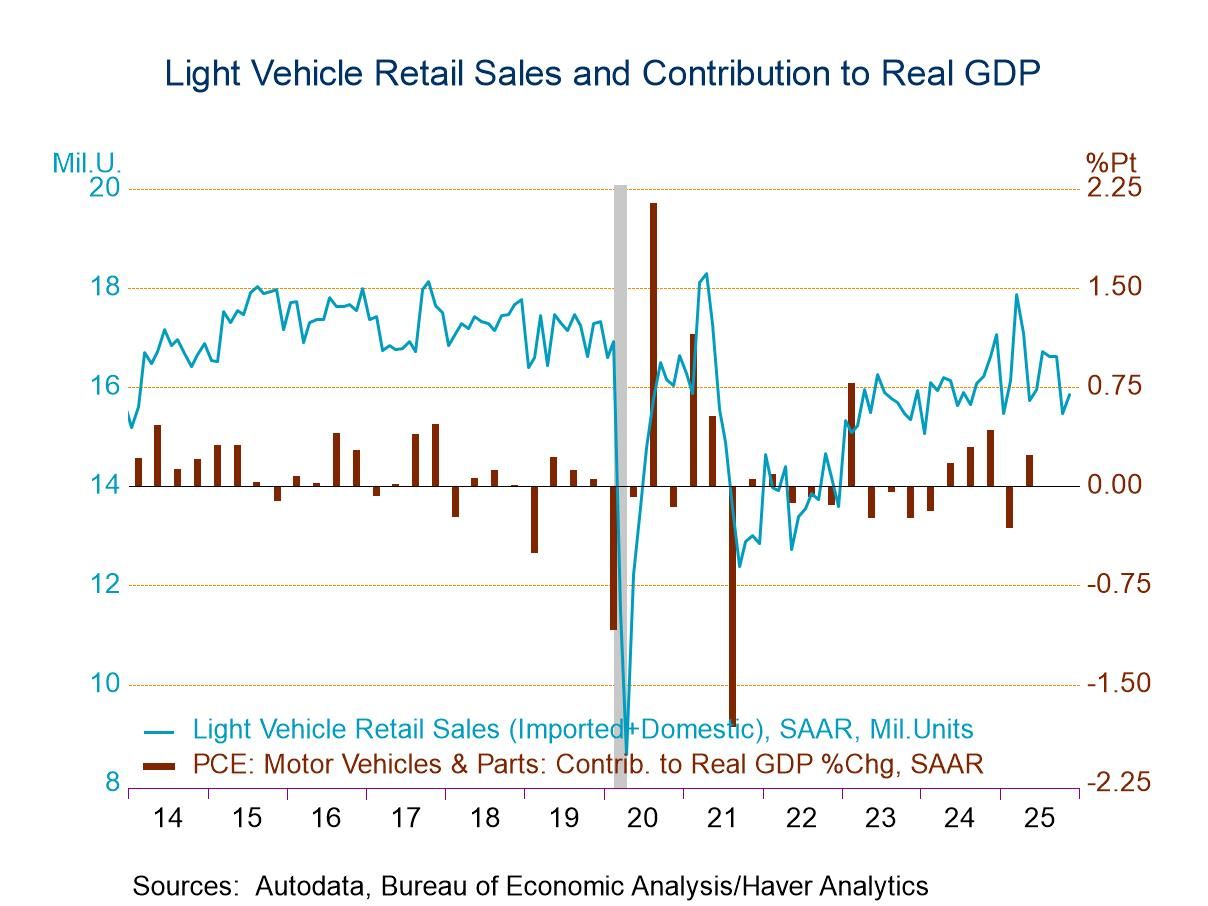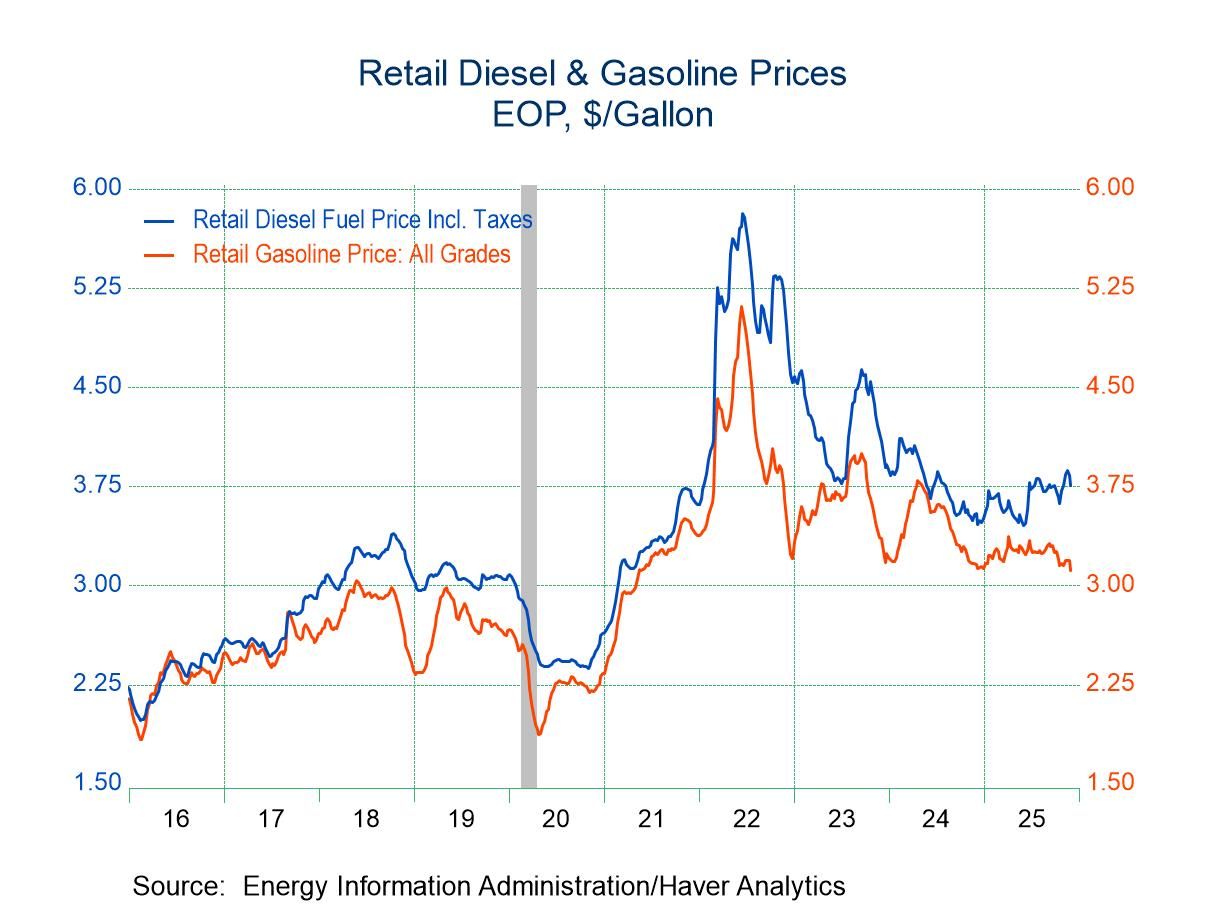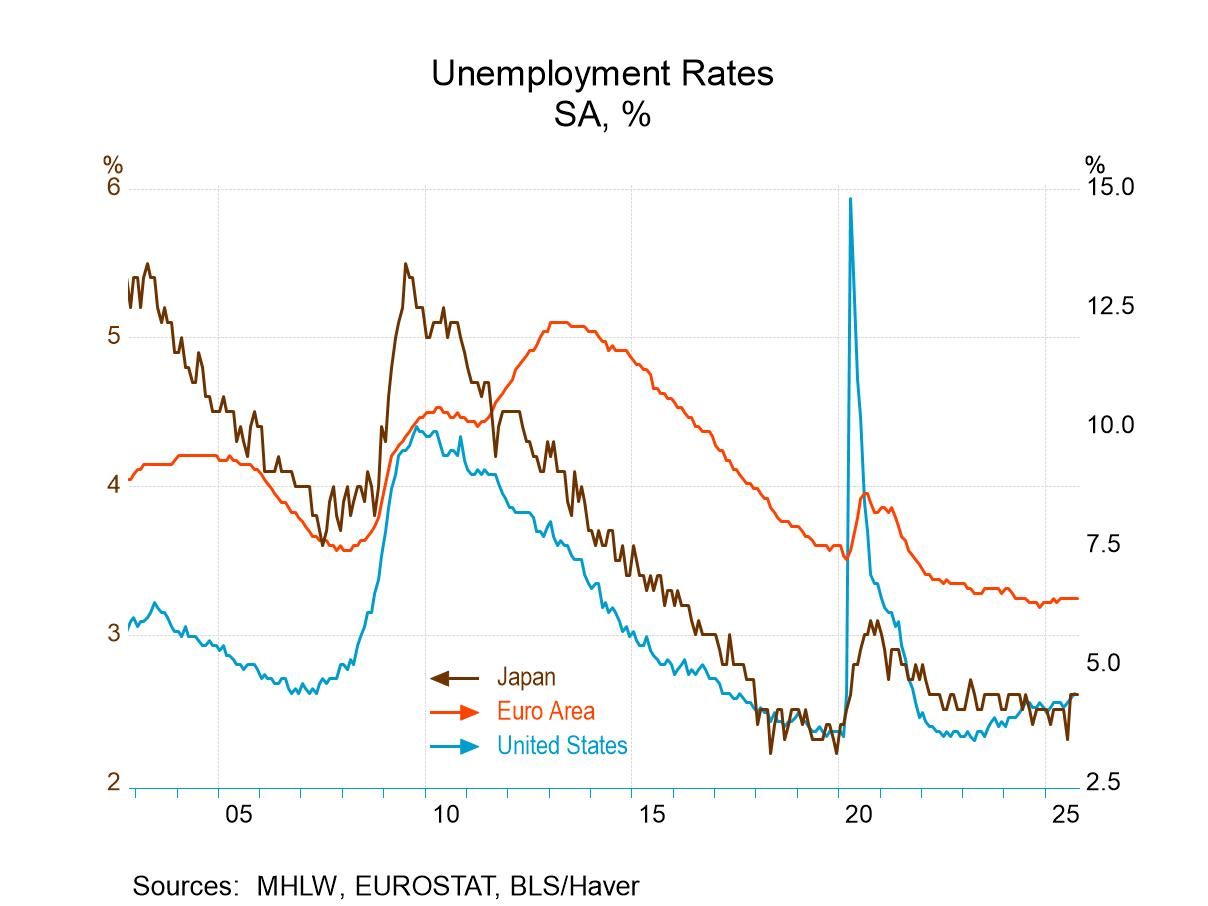 Global| Jun 26 2025
Global| Jun 26 2025Charts of the Week: Calmer on the Surface, Cracks Beneath
by:Andrew Cates
|in:Economy in Brief
Summary
Financial markets have been on a geopolitical rollercoaster in recent days. The Iran–Israel flare-up briefly sent oil prices surging and risk assets tumbling, but tensions have since eased and market conditions have stabilised. That calm has refocused attention on underlying fundamentals—and the signals are mixed. Business surveys and Asian trade data (charts 1 and 2) suggest global growth momentum has held up well, despite the recent US tariff shock. But consumers are painting a more cautious picture: confidence remains subdued across the US, UK, and Eurozone, pointing to a more fragile backdrop (chart 3). In the US, signs of softer growth and inflation have caught the Fed’s eye, with several officials adopting a more dovish tone in recent days (chart 4). Yet structural risks continue to loom large. The sustained strength in gold and bitcoin reflects ongoing unease over inflation, financial stability, and broader geopolitical risk (chart 5). And the energy transition remains a critical faultline. Fossil fuels still dominate electricity generation, and while renewables are growing, they are arguably not scaling fast enough to meet rising demand or climate goals (chart 6). In short, climate risk and geopolitical instability continue to cast a long shadow over the outlook—well beyond the reach of monetary policy.
The global business cycle Despite the tariff disruptions triggered earlier this year by the Trump administration, the latest flash PMI surveys suggest the global economy is proving more resilient than many had feared. As shown in our first chart, momentum has picked up notably in Japan. While the U.S. has lost some ground over the past three months—likely reflecting tariff-related uncertainty—the overall level of its flash PMI remains consistent with solid underlying growth. France, by contrast, remains a clear laggard. Its PMI continues to sit well below the 50 threshold, pointing to ongoing contraction. However, the pace of decline has eased modestly over the past three months, hinting at some tentative stabilisation. Meanwhile, the UK posted modest growth in June, though at a markedly slower pace than earlier in the year. All told, global growth remains uneven. But the snapshot from June suggests that, for now, the world economy is holding up better than expected—and the broader fallout from US tariffs has yet to deliver a decisive global drag.
Chart 1: June’s Flash PMI surveys: Levels versus Changes

World trade South Korea’s latest trade data offer a reassuring signal on global growth. Often seen as a bellwether for world trade, Korea’s exports—especially semiconductors—posted solid year-on-year gains in the first 20 days of June, despite tariff headwinds. The resilience in chip exports suggests global industrial activity and tech demand have also held up well possibly thanks to some front-loading of US demand.
Chart 2: South Korea’s export growth in the first 20 days of June

Consumer confidence Yet beneath the surface of this strength in trade and business sentiment, consumers are showing signs of strain. The latest confidence data—from the US Conference Board, the UK GfK Barometer, and the Euro Area flash estimate—reveal a picture of fragility. All three regions continue to register Z-scores below their long-run averages and with some notable weakness in the US in particular over recent months.
Chart 3: Consumer confidence in the US, Euro area and UK

Global disinflation progress Inflation trends in advanced economies are giving central banks some much-needed breathing room. As the next chart shows, goods inflation—once the epicentre of the post-pandemic surge—has not only eased but briefly dipped into negative territory in late 2024. Services inflation remains more stubborn, but it too is gradually losing momentum. This modest but steady deceleration has been enough to reinforce a more dovish tone among central banks. Even so, the pace of any further policy easing will hinge on whether disinflation persists and whether fragile consumer sentiment—highlighted in earlier charts—translates into broader demand weakness.
Chart 4: Goods and Services CPI inflation in Advanced Economies

Gold and Bitcoin Amid macro uncertainty, still-elevated geopolitical risk, and some residual inflation concerns, investors have continued to flock to real and alternative assets over the past few years. This next chart highlights the strong correlation between gold and bitcoin, both of which have surged since mid-2023. While their drivers differ, their joint rally reflects deeper anxieties about fiat debasement, sovereign risk, and policy limits. With further rate cuts looming, demand for inflation hedges and portfolio diversifiers has returned. Volatile as they are, these assets arguably remain key barometers of market trust in institutions and financial stability.
Chart 5: Gold and Bitcoin prices

Electricity generation Beneath the surface here lies a deeper, slower-burning source of uncertainty: the global energy transition. This chart shows that while global per capita electricity generation has steadily increased, fossil fuels still dominate the mix—by a wide margin. Renewable electricity has made impressive gains, but not nearly fast enough to displace hydrocarbons. Nuclear, once a larger part of the mix, has stagnated or declined in many regions. This structural imbalance raises urgent questions about how the global economy will meet growing energy demand while staying within planetary boundaries. And for all the excitement around green innovation, the energy system remains carbon-heavy—and the road to decarbonisation still fraught with friction.
Chart 6: Global Per Capita Electricity Generation by source

Andrew Cates
AuthorMore in Author Profile »Andy Cates joined Haver Analytics as a Senior Economist in 2020. Andy has more than 25 years of experience forecasting the global economic outlook and in assessing the implications for policy settings and financial markets. He has held various senior positions in London in a number of Investment Banks including as Head of Developed Markets Economics at Nomura and as Chief Eurozone Economist at RBS. These followed a spell of 21 years as Senior International Economist at UBS, 5 of which were spent in Singapore. Prior to his time in financial services Andy was a UK economist at HM Treasury in London holding positions in the domestic forecasting and macroeconomic modelling units. He has a BA in Economics from the University of York and an MSc in Economics and Econometrics from the University of Southampton.






